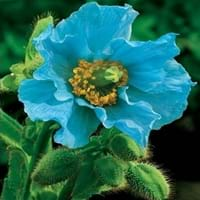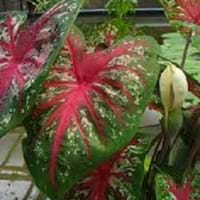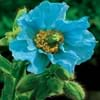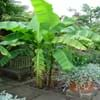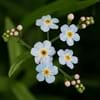Life Span
Perennial
Annual and Perennial
Type
Perennial
Tender Perennial
Origin
Southern Asia
Southern Europe, Mediterranean
Types
Not Available
Not Available
Habitat
Mountains
gardens, Grassland, Prairies, tropical environments, Tropical regions
USDA Hardiness Zone
Not Available
7-9
Sunset Zone
A1, A2, A3, 1b, 2a, 2b, 3a, 3b, 4, 5, 6, 17
4, 5, 6, 14, 15, 16, 17, 18, 19, 20, 21, 22, 23, 24
Habit
Upright/Erect
Mat-forming
Flower Color
Blue, Rose
White, Green
Flower Color Modifier
Bicolor
Bicolor
Fruit Color
Green, Tan
Green
Leaf Color in Spring
Green, Blue Green
Gray Green
Leaf Color in Summer
Green, Blue Green
Gray Green
Leaf Color in Fall
Green, Blue Green
Gray Green
Leaf Color in Winter
Light Green
Light Green
Leaf Shape
Oval with toothed margin
Linear
Plant Season
Summer
Spring, Summer, Fall, Winter
Sunlight
Partial Sun, Partial shade
Full Sun, Partial Sun
Type of Soil
Loam
Loam, Sand
The pH of Soil
Acidic, Neutral
Neutral, Alkaline
Soil Drainage
Well drained
Well drained
Bloom Time
Early Summer
Spring, Late Spring, Early Summer, Summer, Late Summer, Early Fall
Tolerances
Cold climate
Drought
Where to Plant?
Ground
Container, Ground, Pot
How to Plant?
Divison, From bulbs, From Rhizomes, Seedlings
Seedlings, Stem Cutting
Plant Maintenance
Not Available
Medium
Watering Requirements
Do not let dry out between waterings, Requires consistently moist soil
Allow soil to be completely dry in between waterings, Water Deeply, Water less during winter
In Summer
Lots of watering
Lots of watering
In Spring
Moderate
Moderate
In Winter
Average Water
Average Water
Soil pH
Acidic, Neutral
Neutral, Alkaline
Soil Type
Loam
Loam, Sand
Soil Drainage Capacity
Well drained
Well drained
Sun Exposure
Partial Sun, Partial shade
Full Sun, Partial Sun
Pruning
In late autumn, Remove damaged leaves, Remove dead branches, Remove dead leaves
Cut or pinch the stems, Do not prune during shooting season, Prune if you want to improve plant shape, Prune prior to new growth, Remove deadheads
Fertilizers
Balanced liquid fertilizer monthly
No fertilizers needed
Pests and Diseases
Downy mildew, Slugs, Snails
fungus, Insects, Red blotch
Plant Tolerance
Cold climate
Drought
Flower Petal Number
Single
Single
Foliage Texture
Not Available
Fine
Foliage Sheen
Not Available
Matte
Attracts
Bees, Birds, Butterflies
Bees, Birds, Butterflies
Allergy
Not Available
Skin irritation
Aesthetic Uses
Beautification, Bouquets, Cottage Garden, Showy Purposes
Beautification, Showy Purposes
Beauty Benefits
Not Available
Not Available
Edible Uses
Not Available
No
Environmental Uses
Not Available
Air purification
Medicinal Uses
Analgesic, Mild sedative
No Medicinal Use
Part of Plant Used
Flowers
Whole plant
Other Uses
Employed in herbal medicine
Showy Purposes
Used As Indoor Plant
No
No
Used As Outdoor Plant
Yes
Yes
Garden Design
Feature Plant, Mixed Border
Alpine, Container, Edging, Foundation, Groundcover, Mixed Border, Rock Garden / Wall
Botanical Name
MECONOPSIS betonicifolia
CALADIUM 'Aaron'
Common Name
Himalayan Blue Poppy
Aaron Caladium, Angel Wings, Fancy-leaved Caladium
In Hindi
हिमालय ब्लू पोस्ता
Aaron Caladium
In German
Himalaya Blue Poppy
Aaron Caladium
In French
Himalaya pavot bleu
Aaron Caladium
In Spanish
Amapola azul del Himalaya
Aaron Caladium
In Greek
Himalayan μπλε παπαρούνας
Aaron τροπικό φυτό
In Portuguese
Himalayan Blue Poppy
Aaron Caladium
In Polish
Himalayan niebieski mak
Aaron Caladium
In Latin
Blue Himalayan Poppy
Aaron Caladium
Phylum
Magnoliophyta
Tracheophyta
Class
Magnoliopsida
Liliopsida
Order
Ranunculales
Alismatales
Family
Papaveraceae
Araceae
Genus
Meconopsis
Caladium
Clade
Angiosperms, Eudicots
Angiosperms, Monocots
Tribe
Not Available
Not Available
Subfamily
Not Available
Aroideae
Number of Species
Not Available
Season and Care of Himalayan Blue Poppy and Aaron Caladium
Season and care of Himalayan Blue Poppy and Aaron Caladium is important to know. While considering everything about Himalayan Blue Poppy and Aaron Caladium Care, growing season is an essential factor. Himalayan Blue Poppy season is Summer and Aaron Caladium season is Summer. The type of soil for Himalayan Blue Poppy is Loam and for Aaron Caladium is Loam, Sand while the PH of soil for Himalayan Blue Poppy is Acidic, Neutral and for Aaron Caladium is Neutral, Alkaline.
Himalayan Blue Poppy and Aaron Caladium Physical Information
Himalayan Blue Poppy and Aaron Caladium physical information is very important for comparison. Himalayan Blue Poppy height is 90.00 cm and width 45.70 cm whereas Aaron Caladium height is 30.50 cm and width 30.50 cm. The color specification of Himalayan Blue Poppy and Aaron Caladium are as follows:
Himalayan Blue Poppy flower color: Blue and Rose
Himalayan Blue Poppy leaf color: Green and Blue Green
Aaron Caladium flower color: White and Green
- Aaron Caladium leaf color: Gray Green
Care of Himalayan Blue Poppy and Aaron Caladium
Care of Himalayan Blue Poppy and Aaron Caladium include pruning, fertilizers, watering etc. Himalayan Blue Poppy pruning is done In late autumn, Remove damaged leaves, Remove dead branches and Remove dead leaves and Aaron Caladium pruning is done Cut or pinch the stems, Do not prune during shooting season, Prune if you want to improve plant shape, Prune prior to new growth and Remove deadheads. In summer Himalayan Blue Poppy needs Lots of watering and in winter, it needs Average Water. Whereas, in summer Aaron Caladium needs Lots of watering and in winter, it needs Average Water.
